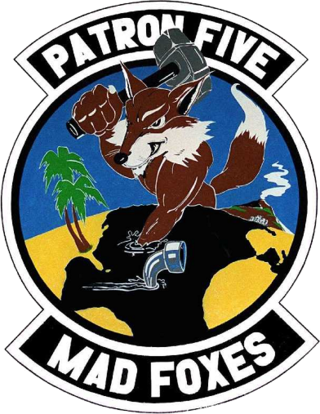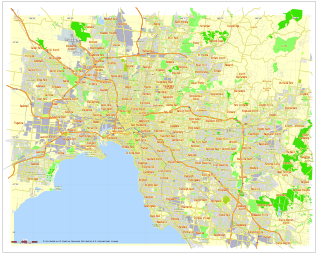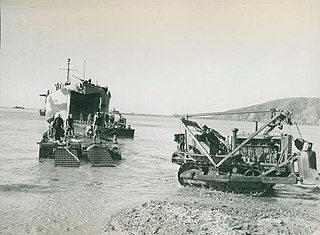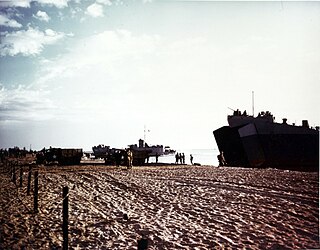
The United States Navy Sea, Air, and Land (SEAL) Teams, commonly known as Navy SEALs, are the U.S. Navy's primary special operations force and a component of the Naval Special Warfare Command. Among the SEALs' main functions are conducting small-unit special operation missions in maritime, jungle, urban, arctic, mountainous, and desert environments. SEALs are typically ordered to capture or kill high level targets, or to gather intelligence behind enemy lines. SEAL team personnel are hand selected, highly trained, and possess a high degree of proficiency in direct action (DA), and special reconnaissance (SR), among other tasks like sabotage, demolition, intelligence gathering, and hydro-graphic reconnaissance, training, and advising friendly militaries or other forces.

Mather Air Force Base was a United States Air Force Base, which was closed in 1993 pursuant to a post-Cold War BRAC decision. It was located 12 miles (19 km) east of Sacramento, on the south side of U.S. Route 50 in Sacramento County, California. Mather Field was one of 32 Air Service training camps established after the United States entry into World War I in April 1917.

United States Navy Explosive Ordnance Disposal technicians render safe all types of ordnance, including improvised, chemical, biological, and nuclear. They perform land and underwater location, identification, render-safe, and recovery of foreign and domestic ordnance. They conduct demolition of hazardous munitions, pyrotechnics, and retrograde explosives using detonation and burning techniques. They forward deploy and fully integrate with the various Combatant Commanders, Special Operations Forces (SOF), and various warfare units within the Navy, Marine Corps, Air Force and Army. They are also called upon to support military and civilian law enforcement agencies, as well as the Secret Service.

Wendover Air Force Base is a former United States Air Force base in Utah now known as Wendover Airport. During World War II, it was a training base for B-17 and B-24 bomber crews. It was the training site of the 509th Composite Group, the B-29 unit that carried out the atomic bombings of Hiroshima and Nagasaki.

Silver Strand Training Complex South (SSTC-S), formerly known as the Naval Radio Receiving Facility (NRRF), is the premier training facility for U.S. Special Operations Forces. Located between Imperial Beach and Silver Strand State Beach near San Diego in southern California, USA, this facility was known by locals as the "elephant cage" which is a nickname for the large Wullenweber direction finder antenna. The antenna was used to provide direction finding, primary communication links for U.S. Navy submarines. The antenna was finally dismantled in 2015, even though it was scheduled to be removed in fiscal year 2007. Presently the area is part of Naval Base Coronado and commanded by that base's Commanding Officer. While just north of Imperial Beach, it is within the city limits of Coronado.

Patrol Squadron FIVE (VP-5) is a long-lived maritime patrol squadron of the United States Navy. It is the second squadron to bear the VP-5 designation. VP-5 is the second oldest patrol squadron, the fourth oldest in the United States Navy, and the 33rd oldest squadron in the United States military. As of 2019, VP-5 is still active and is based at Naval Air Station Jacksonville, Florida.

VP-21 was a Patrol Squadron of the U.S. Navy. The squadron was established as Established as Bombing Squadron 111 (VB-111) on 30 July 1943, redesignated Patrol Bombing Squadron 111 (VPB-111) on 1 October 1944, redesignated Patrol Squadron 111 (VP-111) on 15 May 1946, redesignated Heavy Patrol Squadron (Landplane) 11 (VP-HL-11) on 15 November 1946, redesignated Patrol Squadron 21 (VP-21) on 1 September 1948 and disestablished on 21 November 1969. It was the fifth squadron to be designated VP-21, the first VP-21 was redesignated VP-45 on 1 July 1939, the second VP-21 was redesignated VP-1 on 30 July 1940, the third VP-21 was disestablished on 18 April 1942 and the fourth VP-21 was redesignated VPB-21 on 1 October 1944.

California during World War II was a major contributor to the World War II effort. California's long Pacific Ocean coastline provided the support needed for the Pacific War. California also supported the war in Europe. After the Japanese attack on Pearl Harbor on December 7, 1941, most of California's manufacturing was shifted to the war effort. California became a major ship builder and aircraft manufacturer. Existing military installations were enlarged and many new ones were built. California trained many of the troops before their oversea deployment. Over 800,000 Californians served in the United States Armed Forces. California agriculture, ranches and farms were used to feed the troops around the world. California's long coastline also put the state in fear, as an attack on California seemed likely. California was used for the temporary and permanent internment camps for Japanese Americans. The population grew significantly, largely due to servicemen who were stationed at the new military bases/training facilities and the mass influx of workers from around the U.S. in the growing defense industries. With all the new economy activity, California was lifted out of the Great Depression. Over 500,000 people moved to California from other states to work in the growing economy. California expanded its oil and mineral production to keep up with the war demand.

Amphibious Training Base Morro Bay also called Camp Morro Bay and Morro Bay Section Base was a US Navy training base for amphibious beach assault during World War II. The base opened in 1941 to train troops for the Pacific theater of operations' island leapfrogging using landing craft and LCVP. The base was located in Morro Bay, California in San Luis Obispo County. The base was on 250 acres (100 ha) of leased land. Ships for the base were based at the Avila's Port San Luis in San Luis Bay. Which was also leased with the yacht club and its warehouse. Added to the leased land was: two piers, mess hall, gallon water storage tanks, roads, buildings, garages, and ammo storage area. The Navy also extended the bay's breakwater. A wooden trestle bridge was built to get to the nearby sandspit, the bridge was removed in 1946 and some pillars still remain. The near Estero Bay was the site of training assault also, by the Navy, US Army, US Marine Corps and United States Coast Guard also taking over the unused vacation hotel there. Nearby United States Army Air Corps fields had fighter aircraft fire flour shot to make the training more real. Up to 175 landing craft were at the base and 16,000 troops a day trained. In the base and in nearby Los Osos and Baywood live fire bombing, machine gun, bazookas, and flamethrowers were used for training. The training ended on 31 October 1945 and the site is now a Duke Energy power plant built in 1955, site of three large smoke stacks. North of the former base in the notable Morro Rock. Avila Beach was also a Union Oil plant with many oil storage tanks, use for Navy ships.

Camp Hydle also called Drakes Bay Range was a large training center during World War II, located at Drakes Bay, on what is now Point Reyes National Seashore on the coast of northern California in the United States. The camp had several training sites: Camp Hydle, Drakes Bay Air to Ground Gunnery Range, Drakes Bay Dive Bombing Target, Camp Murphy's Ranch, Camp Hydle Maneuver Area, and Camp Hydle Skip and Dive Bombing Range. Also at the camp were landing craft training and air sea rescue training. The site was 10,532 acres of Marin County, California land on the West Coast of the United States. The complete area from Stinson Beach to the south and Dillon Beach to the north was called the Point Reyes Gunnery Range at Point Reyes. The Gunnery Range also included: two radar towers, horse stable, two lifeboat Stations, the Point Reyes Lighthouse, lookout towers, and land strafing targets (rake). The dive bomber airplanes came from Hamilton Army Airfield (AAF), Santa Rosa Army Airfield (AAF), and Naval Air Station Alameda (NAS). In addition to Drakes Bay the planes also training using the nearby Abbotts Lagoon, and Tomales Bay. The landing craft training used Limantour Beach and Limantour Spit. Anti-aircraft gun training was important training for the Pacific War. Camp Hydle base was inland 1/2 mile east of Limantour Beach. For gunner training planes towed targets across Drakes Bay. Ships also trained at the base, like the USS Walton and USS Nevada (BB-36). The Navy's Camp Hydle took over the Point Reyes Lifeboat Station during the war. The 50 men at the Station were air sea rescue pilots, dropping rafts to plane crew that landed in the ocean during training. The first troops arrived at the site on December 7, 1941. The site was also used as a coast defense spot, looking out for Japanese subs and ships. Most of the land was leased from Leland Murphy, after the war in 1962, the site became Point Reyes National Seashore.

US Naval Advance Bases were built globally by the United States Navy during World War II to support and project U.S. naval operations worldwide. A few were built on Allied soil, but most were captured enemy facilities or completely new. Advance bases provided the fleet with support to keep ships tactically available with repair and supply depots of facilities, rather than return them to the continental United States. Before Japan declared war on the United States the U.S. Navy had a single fleet-sized advanced base in the Territory of Hawaii at Naval Station Pearl Harbor. During the war the U.S. Navy Seabees built over 400 advance bases categorized by size. Naval bases were either Lions or Cubs while airfields were either Oaks or Acorns. Lions and Oaks were major facilities while Cubs and Acorns were minor. PT Boats typically would get a Cub and airfields with single runways were Acorns. The larger bases could do refueling and overhaul; loading of troopship and cargo ships; and preparing amphibious assault ships. Some became major repair depots. The Seabees developed auxiliary floating drydocks were able to repair battle damage and do regular maintenance in the field saving ships trans-pacific trips for repair. A few bases also were developed to be R and R for all U.S. personnel. Most Advance Bases were built by the US Navy's Seabees in Naval Construction Battalions (CBs). At the start of the war civilian contractors were employed in construction. The Seabees in World War II built most of the airfields used by the United States Army Air Forces and United States Marine Corps, as they had the ships and cranes needed to transport the vast amount of equipment needed at the advance bases. The US Army and United States Coast Guard also operated out of many of these facilities. Seabees could build new or repair damaged runways, and with advancements in heavy bomber technology lengthen runways as needed. A few Naval Advance Bases were built for the Korean War and Vietnam War.

Naval Air Station Los Alamitos Naval Outlying Landing Fields were a set airfield near Naval Air Station Los Alamitos to support the training of US Navy pilots during World War 2. The support airfields are called Naval Outlying Landing Field (NOLF). For the war, many new trained pilots were needed. The Naval Outlying Landing Fields provided a place for pilots to practice landing and take off without other air traffic. The remotes sites offered flight training without distractions. Most of the new pilots departed to the Pacific War after training. The Outlying Landing Fields had little or no support facilities. Naval Air Station Los Alamitos opened in 1942 and was transferred to the US Army in 1977 as Los Alamitos Army Airfield. Most of the Outlying fields closed in 1945, having completed the role of training new pilots. To open the needed Outlying Landing Fields quickly, the Navy took over local crop dusting and barnstorming airfields. Naval Air Station Los Alamitos was also called Los Alamitos Naval Reserve Air Base. During the war Marine Corps Air Station El Toro also used the outlying Landing Field. The Timm N2T Tutor was the most common plane used for training on the outlying landing fields.

Naval Base Darwin was a United States Navy base built during World War II at Darwin, Northern Territory, Australia. The first US operations at Darwin was Naval mine depot, built to supply Australia with mines to support the Pacific War. As the US Navy expanded in the Island hopping campaign, Naval Base Darwin expanded to include a Port Darwin submarine base, PT boat Bases, and other facilities. US Navy operations started in 1942 and ended after the war in 1945.

Naval Base Melbourne was a United States Navy base at Melbourne during World War II. Naval Base Melbourne became the South West Pacific Area Command Headquarters after the 1941 invasion of the Philippines. General Douglas MacArthur, after escaping the Philippines, set up his Headquarters after his arrival on 21 March 1942. MacArthur was appointed Supreme Commander of all Allied Forces in the South West Pacific Area. The US Navy also set up a Headquarters a Melbourne, Allied Naval Forces Southwest Pacific Area under Commander Vice Admiral Herbert F. Leary. MacArthur and Leary used the empty Trustees Executive building at 401 Collins Street, Melbourne for headquarters. The Port of Melbourne had good fleet anchorage and docks. A new naval base was built at Brisbane, Australia, Naval Base Brisbane, and the Headquarters was moved to Brisbane in July 1942.

Naval Operating Base Terminal Island, was United States Navy base founded on 25 September 1941 to support the World War II efforts in the Pacific War. Naval Operating Base Terminal Island was founded by combining Naval Facilities in cities of San Pedro, Long Beach and Wilmington, California under one command. Much of the base was on the man-made Terminal Island, and harbor in San Pedro Bay. The harbor was made through the construction of a large breakwater system.


US Naval Bases in North Africa were sea ports and air bases used used in North Africa during World War II by the United States Navy. The ports and air bases supplied the troops of the Allies armies in the flight against Nazi Afrika Korps and later for the invasion of Italy. The ports and airfields were used after their surrender in Operation Torch. Amphibious Training Bases (ATB) were built in Algeria and Tunisia to prepare for the upcoming invasions. Seabees, United States Naval Construction Battalions, did most of the repair work, new construction, and maintaining work at the bases.

Amphibious Training Base (ATB)(USNATB) Advance Amphibious Training Base are United States Armed Forces Bases used for the training of amphibious warfare. Starting with World War II, United States Navy began large-scale amphibious assaults of beaches. To train troops in the use of Amphibious warfare ships and Amphibious Combat Vehicles the Navy established training bases both on the US mainland and overseas at US Naval Advance Bases. The Training involved the United States Navy working with The United States Marine Corps, United States Army and in later years sometime the United States Air Force for air suuport.

Naval Amphibious Training Base Solomons also called Naval Amphibious Training Base Solomons Island was a US Amphibious Training Base at Solomons, Maryland from 1942 to 1945 built to train troops for World War II amphibious warfare. Naval Amphibious Training Base Solomons was the United States's first official naval amphibious training base, it was established in August 1942 on the Patuxent River, called: USNATB, United States Navy Amphibious Training Base. The base closed April 1945 after training 67,698 troops.


















